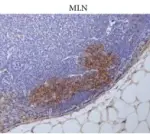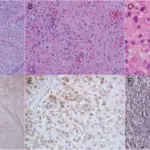Fatal familial insomnia is a rare genetic prion disorder that results in trouble sleeping.
What is the Pathology of Fatal Familial Insomnia?
Etiology: The cause of fatal familial insomnia is the gene PRNP that provides instructions for making the prion protein.
Genes involved: PRNP gene.
Pathogenesis: Reduced glucose use by the thalamus and a mild hypo-metabolism of the cingulate cortex due to the prion proteins.
How does Fatal Familial Insomnia Present?
Patients with fatal familial insomnia have an average age of onset of 50 years with an age range of 18-60 years. It is equally common among men and women. The symptoms, features, and clinical findings associated with fatal familial insomnia include insomnia, hallucinations, dementia, and neck stiffness.
How is Fatal Familial Insomnia Diagnosed?
Fatal familial insomnia is diagnosed on the basis of symptoms and genetic testing.
How is Fatal Familial Insomnia Treated?
Fatal familial insomnia is treated with symptomatic care.
What is the Prognosis of Fatal Familial Insomnia?
The prognosis of fatal familial insomnia is poor.



